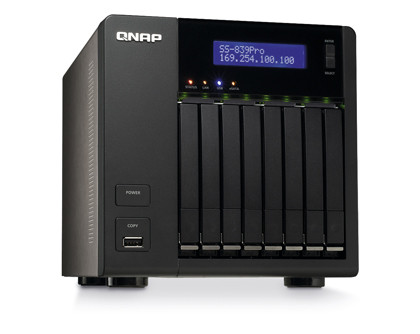You can spend serious money on setting up a dedicated home media network. The logical thing to do is place all your media files on one server. Here's what you need to consider for the best performance.

First, max out the RAM. Lack of memory to buffer each stream can become a bottleneck, so install as much memory as the server's sockets will allow. Next, buy a dedicated second disk drive to store your files. You'll get better performance if you do this because the primary disk's read/write heads have to service the operating system as well, while a second disk drive can dedicate itself to just serving media.
If you plan to delete media after a while and recycle its disk space, you'll need to de-fragment the drives regularly. If you plan to simply expand your collection, you need a disk controller card that can handle more hard disks than usual. A SATA RAID hard disk controller will enable you to add more disks and have fault tolerance built-in. Prices start at under £100, but the more capacity you need, the higher the price will be.
In which we serve
If you know your server will be used heavily, it's a good idea to consider installing a second processor (if your motherboard will take one) or a multicore CPU. This makes it very difficult to overburden the machine with processing duties, meaning that you could be ripping your CDs and DVDs to disk and transcoding them into other formats while others in the house are simultaneously watching or listening to other files.
If you want your server to live in the lounge, there are two further points to consider. The first is where you're going to site it (which will determine the length of the video cable you'll need to buy). You also need to think about noise. Ideally the server needs to be silent, especially if you have an intelligent fan system that 'blows' at times of peak CPU usage.
Invest in a silent CPU fan, which you can get for around £30. Depending on your power supply, you may also need to replace that with a silent model. Again, prices begin at around £30. Once you're happy with your hardware specification, perform a clean installation of the operating system. A good option here, especially if you decide to use a RAID array, is to use Windows Server 2008.
Get daily insight, inspiration and deals in your inbox
Sign up for breaking news, reviews, opinion, top tech deals, and more.
If you've opted to start small with a single-disk system, Windows XP will be fine. You can clear extra disk space by going to Control Panel, selecting 'Add or Remove Programs' and heading to 'Add/Remove Windows Components'. Remove everything you don't really need, such as games and Outlook Express.
Format wars
If your household has a range of hardware, you'll have to use a media format they can all play. Some Linux distributions still don't have some codecs because of licensing issues, for example. Survey all your devices, and transcode your media into the highest quality format they all use.
If you need several terabytes of storage and have a large enough budget, you could invest in a network-attached storage device. These have the dual advantage of having shedloads of disk space coupled with the advantage of RAID fault tolerance. Behind the scenes, these are actually computers with operating systems and hardware optimised for file sharing, leaving them free to simply serve files.
As you'd expect, they also carry a hefty price tag, but if you're serious about media and have a large DVD and video collection, they'll enable you to store files without having to resort to 'lossy' compression.
Current page: How to set up a dedicated home media network
Prev Page How to set up a basic home network Next Page How to set up a gaming network